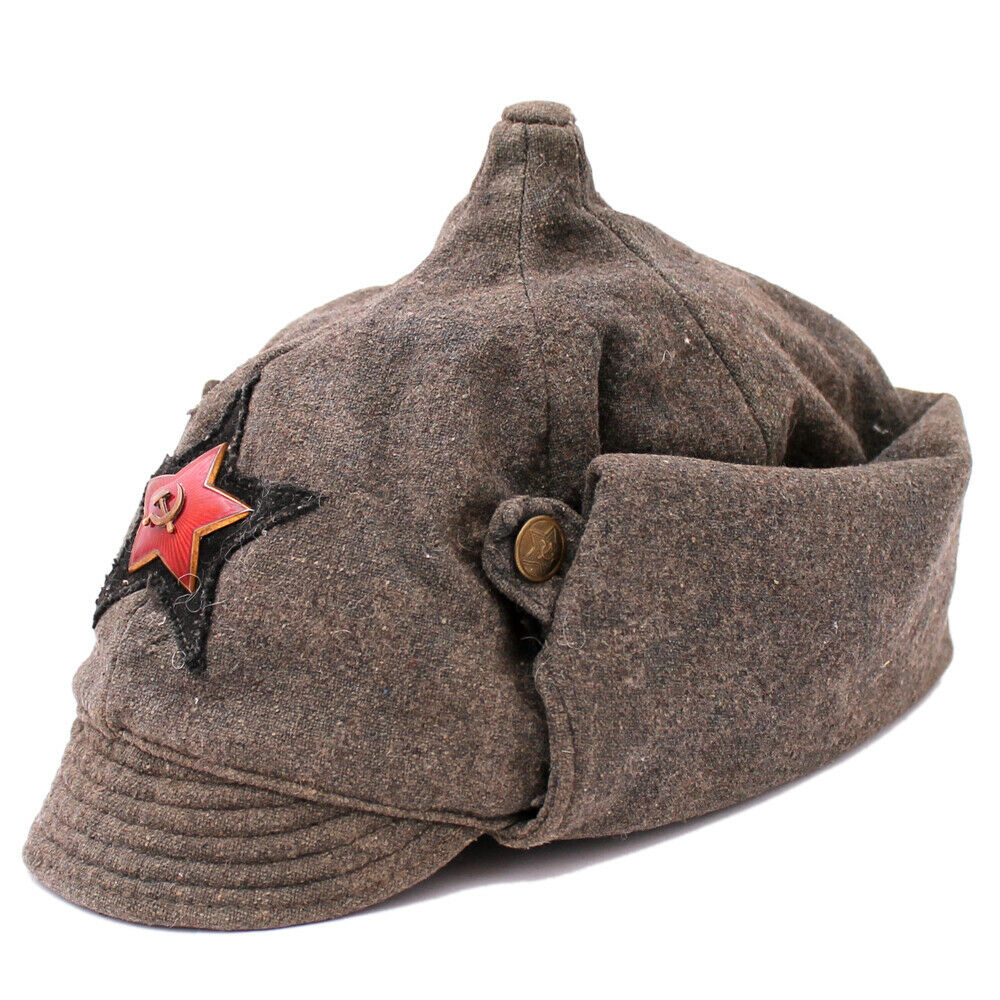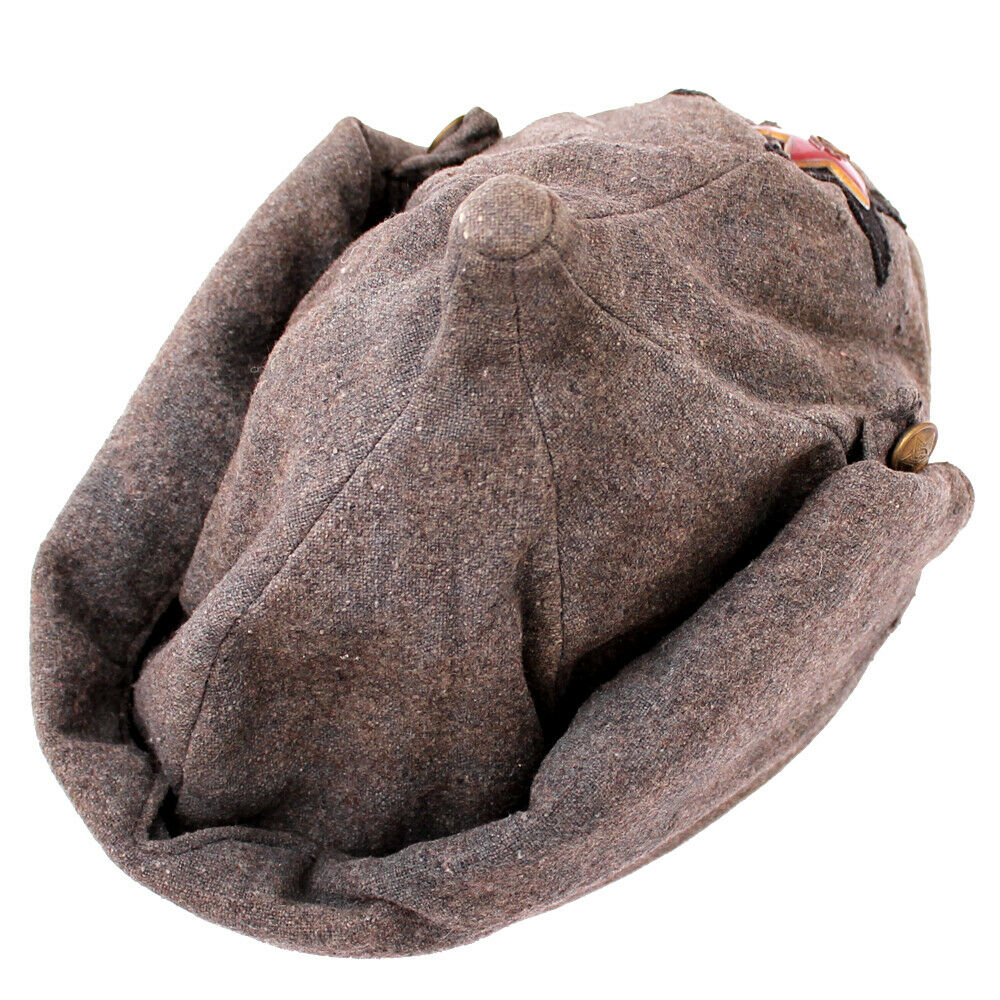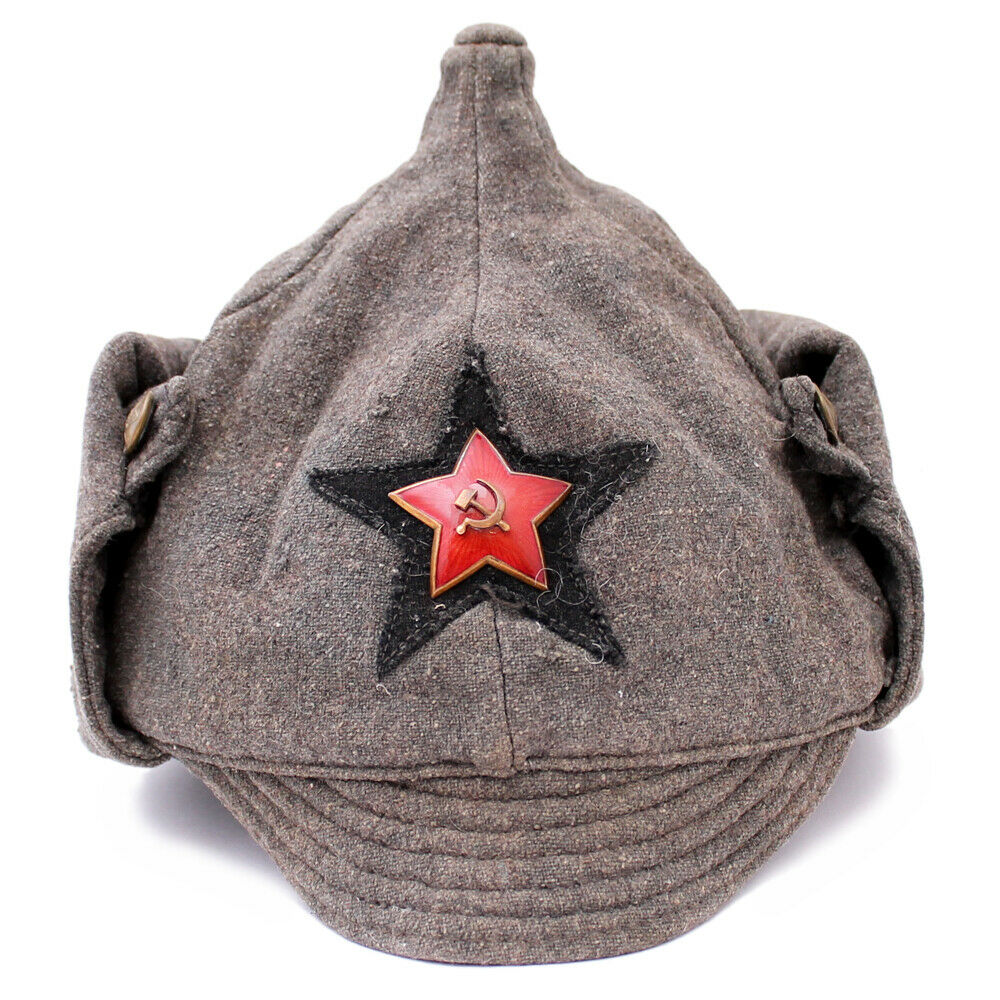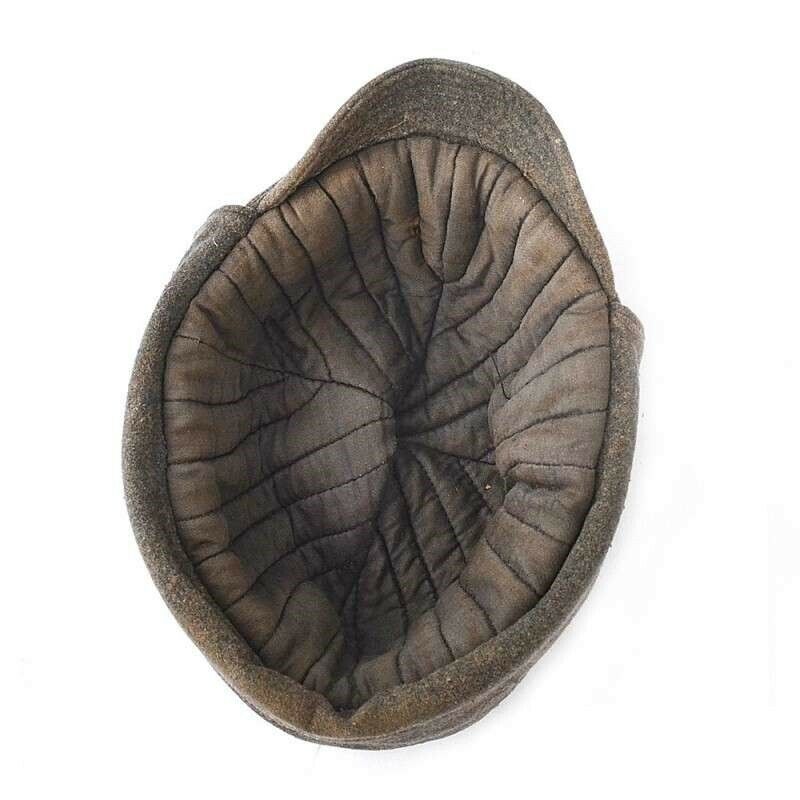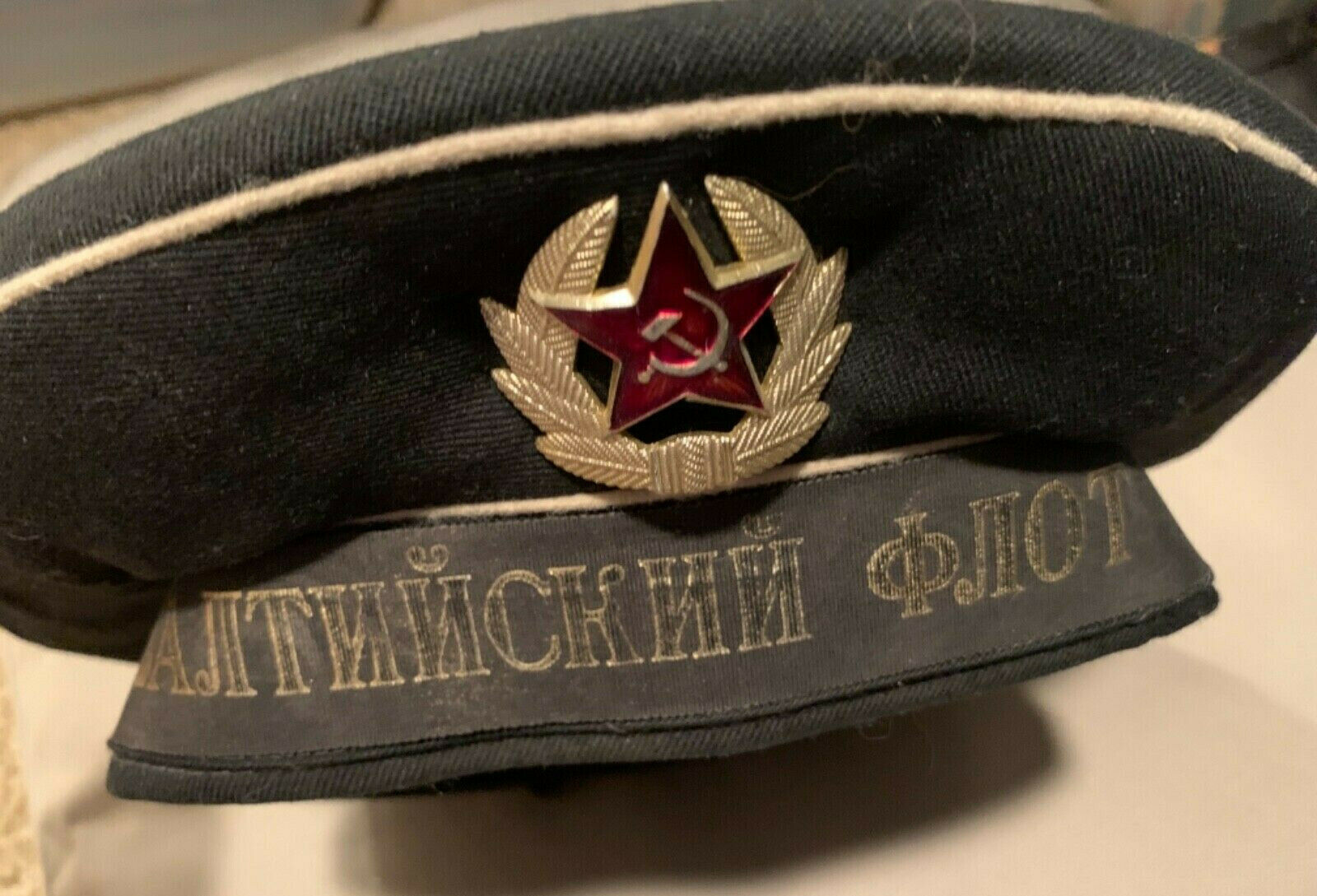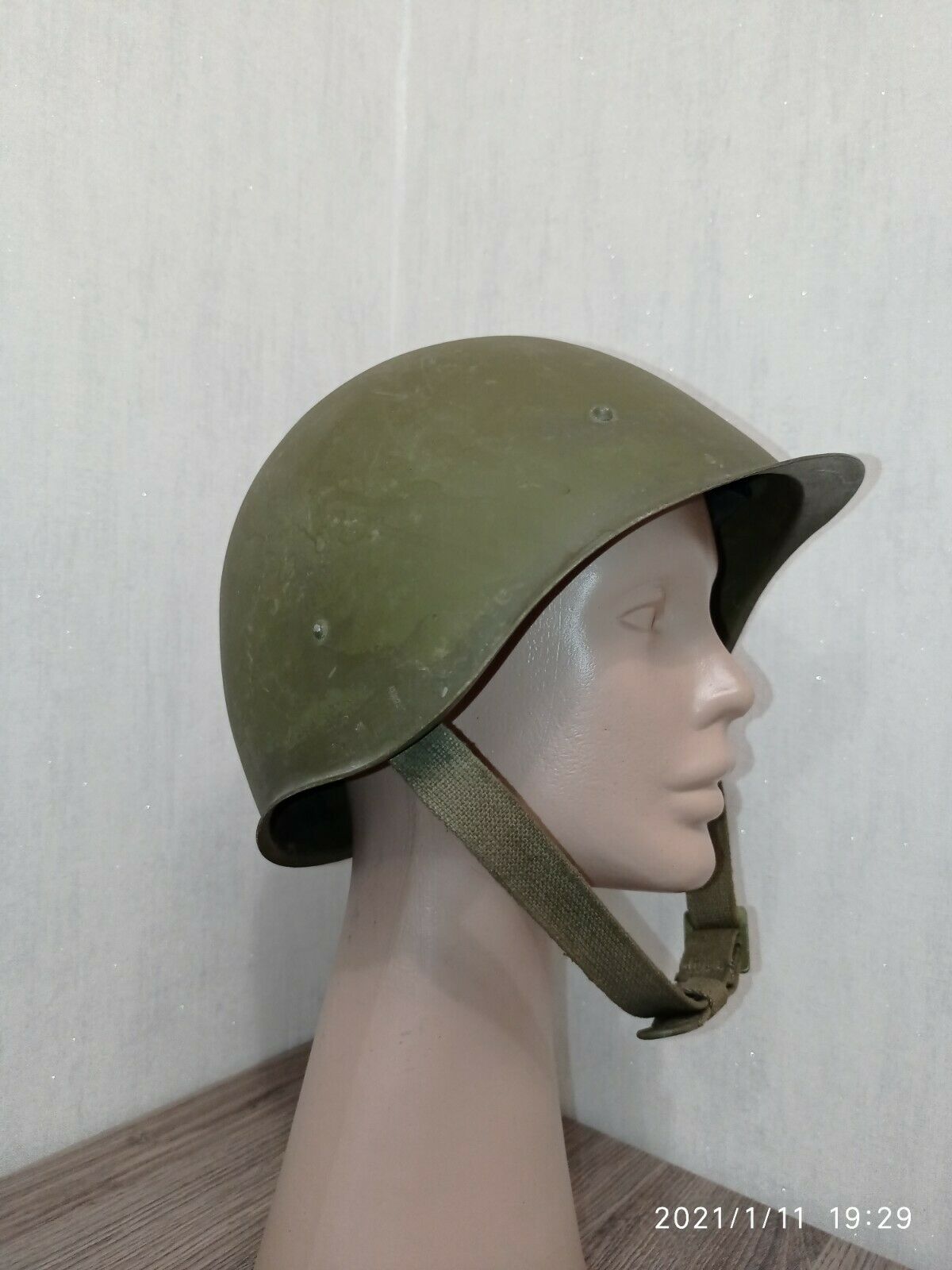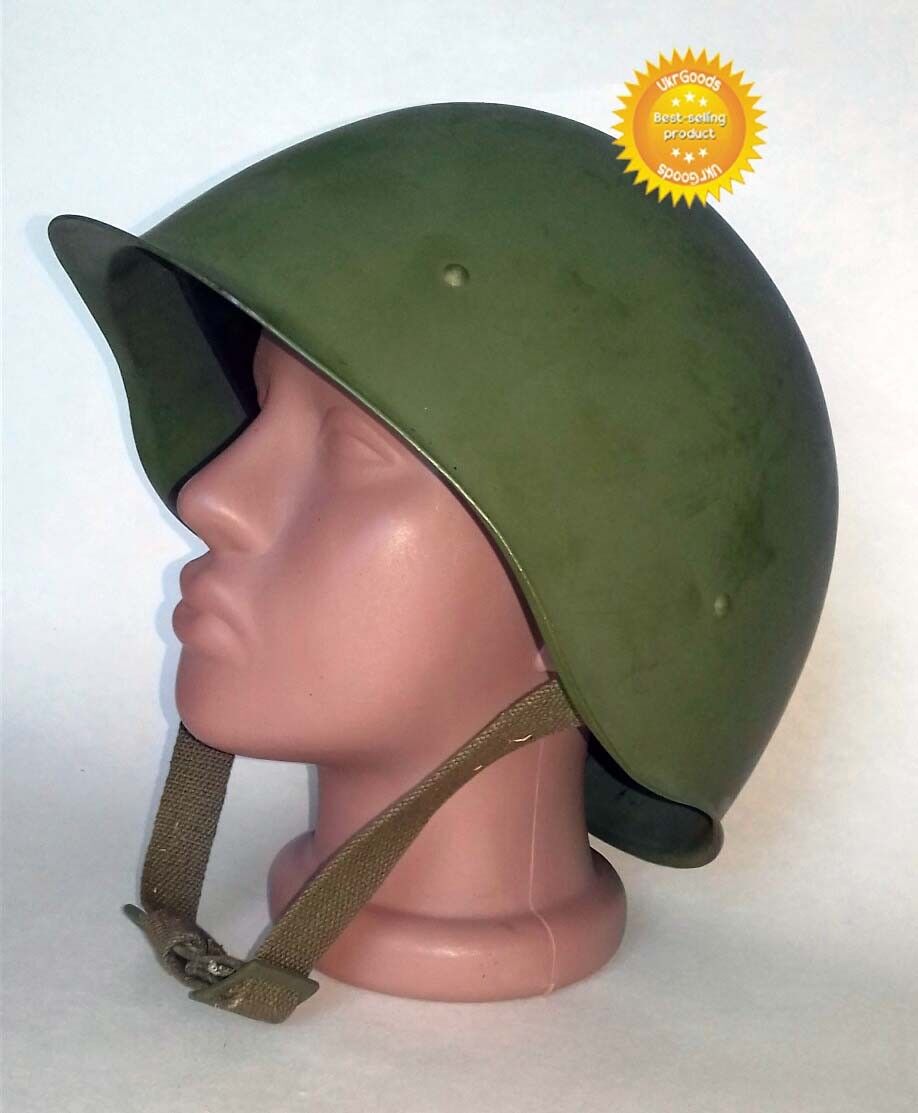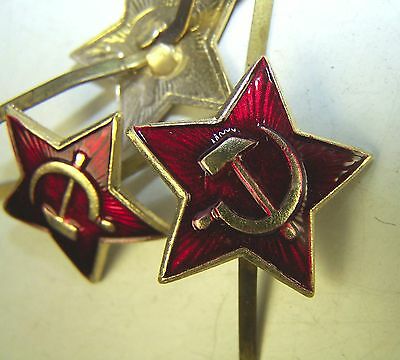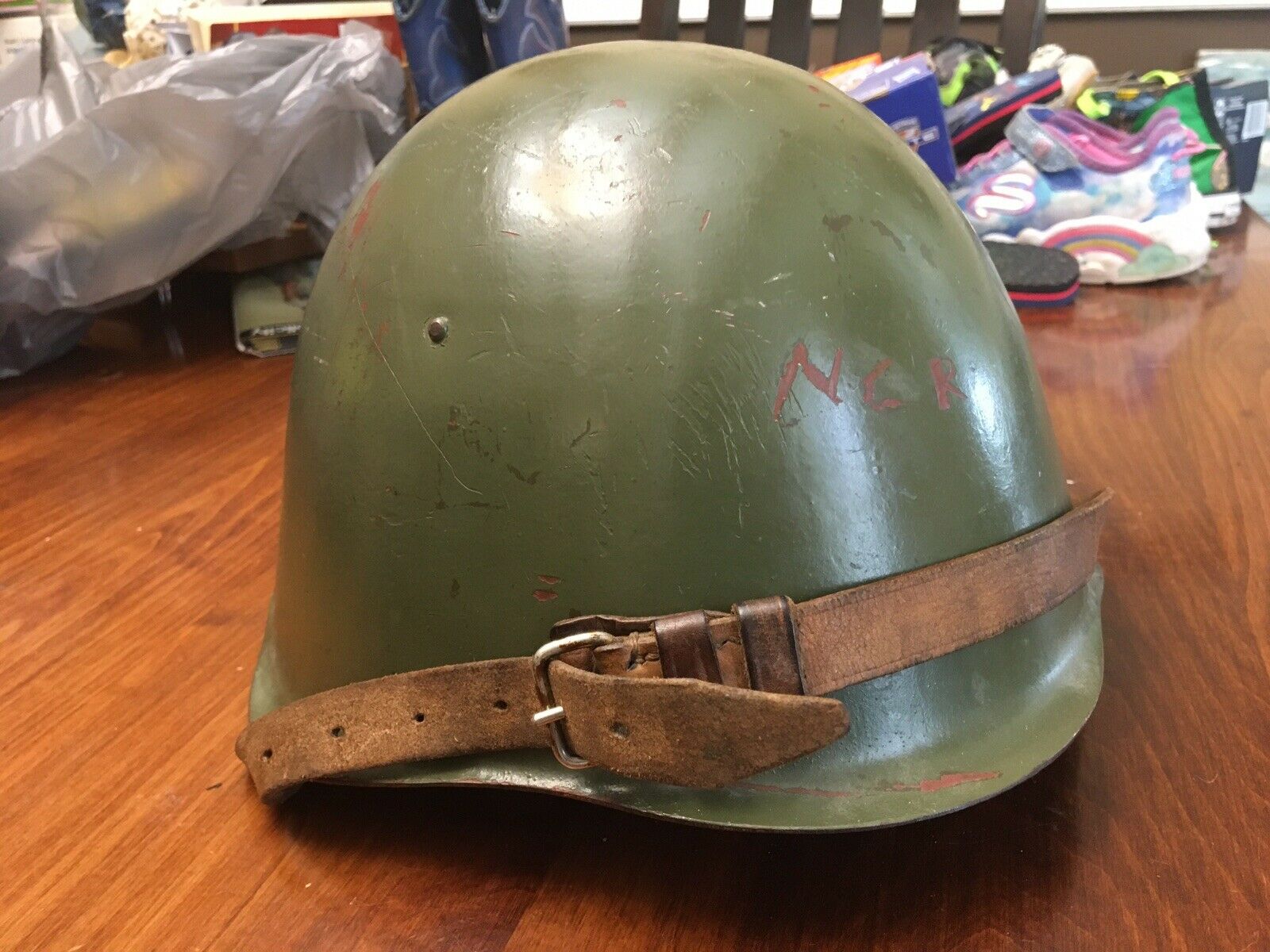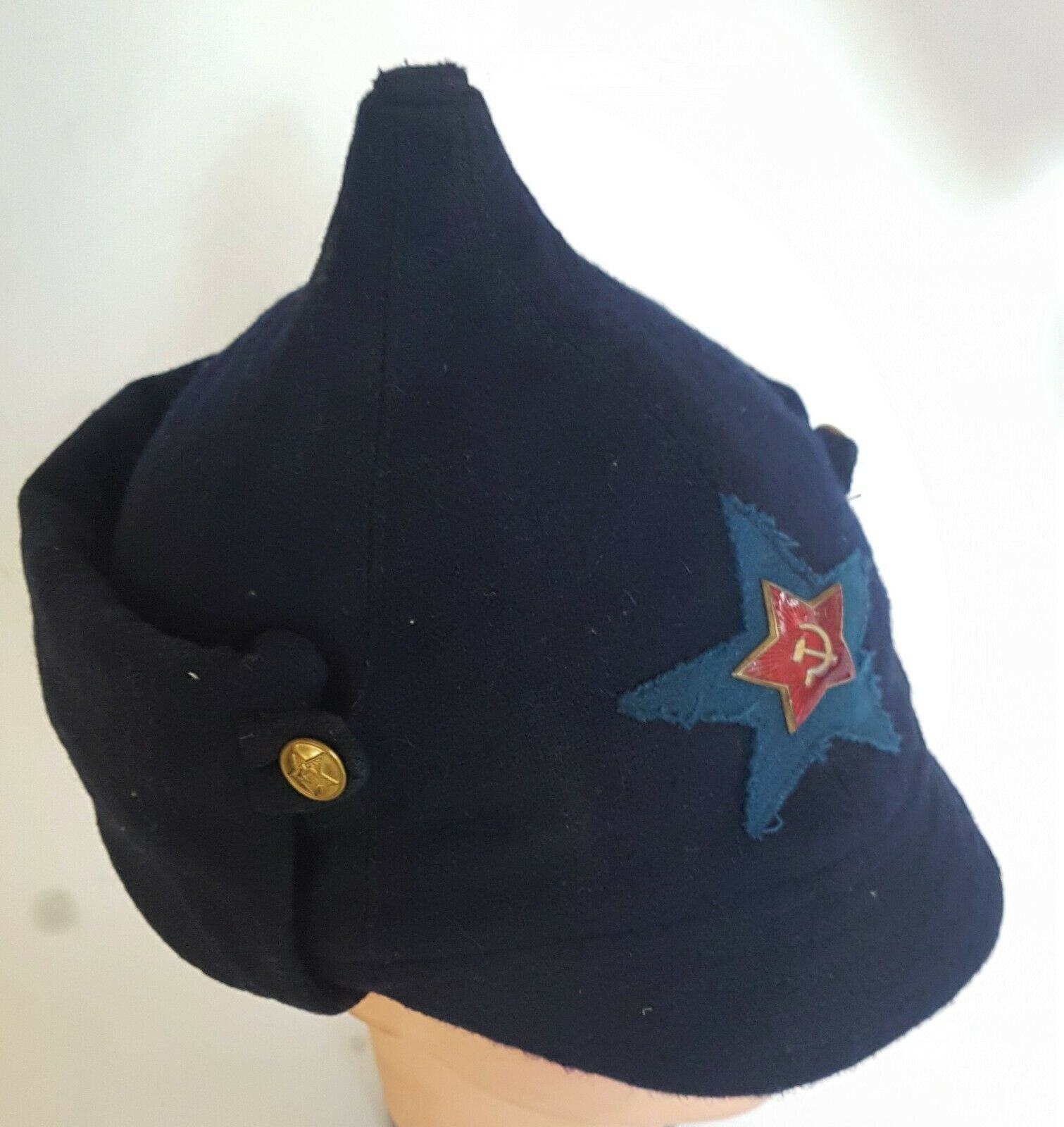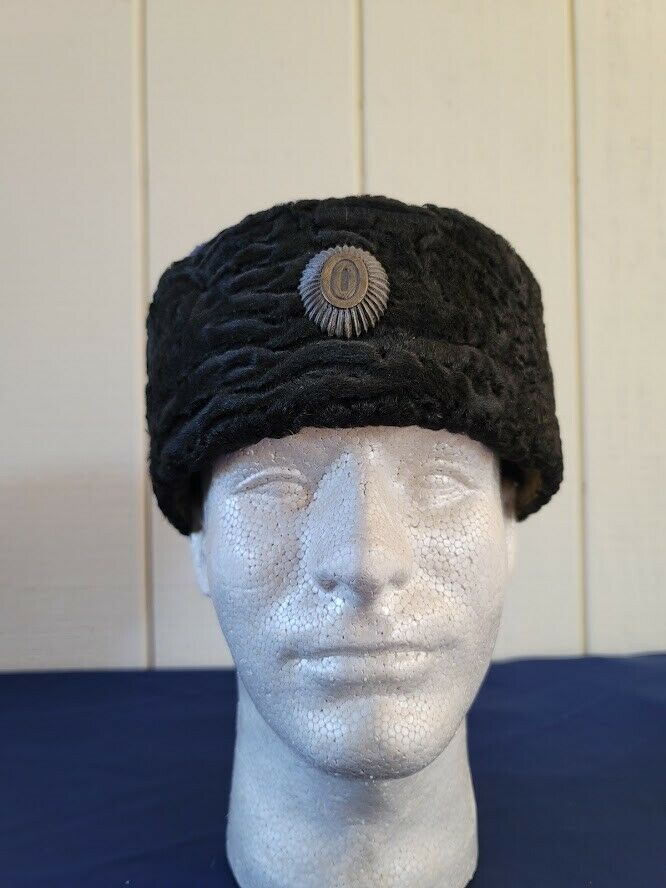-40%
Soviet winter helmet (budenovka) of tank troops or artillery officer model 1936
$ 396
- Description
- Size Guide
Description
Cloth in greatcoat color. Stamps are present, but not readable. This budenovka differs from the helmet of the rank and file in the presence of yellow oxidized buttons. Authenticity guarantee.History reference
In the period 1927-35, various models and modifications of Budenovoks were used in the troops until the order of the NKO of the USSR No. 176 of December 3, 1935 introduced new uniforms and insignia for all personnel of the Red Army. Description of the new helmet from Order No. 176: “... The winter helmet is built of a semi-rough dark gray cloth and consists of a lined cap, a visor and a fold-over head, fastened with two small metal buttons. The cap consists of six spherical triangles sewn by the sides, converging at the apex, fastened with a button covered with the same cloth. In the normal position, the back piece is bent in half in width, its narrow ends are laid inward and fastened to the sides of the helmet cap with a small metal button. On the front of the helmet, the correct five-pointed star is sewn from the instrument cloth assigned to the military branch of the color with the Red Army badge attached to it. The dimensions of the woolen star are such that its outer ends are located on a circle with a diameter of 8 centimeters. The lining under the helmet is made of dyed coarse calico with quilting on cotton wool. Sewing is done in black or dark gray chl / boom. threads number 30 in 6 additions. The cap and, likewise, the butt-cap are pressed down along the fold. "
At the same time, the winter helmet of the command and command staff still remained the winter helmet established by order of the Revolutionary Military Council of the USSR No. 474 dated September 3, 1927. Although this winter helmet only slightly differed (from a semi-coarse dark gray cloth) from the previously established sample in 1922, the front of the new helmet was still sewn with the correct five-pointed star made of instrument cloth assigned to the military branch of the color with the Red Army badge attached to it. The outer ends of the star were located on a circle with a diameter of 8 cm.
In 1936, by order of the NKO of the USSR No. 229, new rules for wearing military uniforms were introduced. Here is what it said about the winter helmet for the commanding and commanding staff of the Red Army: “... The helmet is made of helmet cloth ... with a pointed top ending with a sheathed button. The cap is sewn from 6 wedges; at the front, at the base, it has a visor made of the same cloth, and at the back a folding and snap-on nipple. The lustons (ends) of the back plate are fastened with 2 shaped brass yellow buttons of small size. The cotton cap of the helmet is made with satin lining. In front of the cap, above the visor (two cm from it), a cloth star (8 cm in diameter) of the color according to the type of troops is sewn and a metal commanding officer's star is attached to it ... ”.
The helmet was allowed to be worn in two positions: folded or (in frost of at least 10 degrees Celsius) unfolded. Until 1939, belt loops (leather or fabric sew-on loops stitched on its sides) were meant for fastening a folded back. The presence of such loops often helps the collector in the dating of the helmet, especially when it comes to later specimens.
